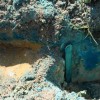 This publication discusses the “blue dye” test, which is one way that Extension professionals can show homeowners how water and nutrients move through the soil following irrigation. The information should be useful for county agents to demonstrate basic irrigation and nitrogen management practices and their effects on nitrate-nitrogen (N) leaching. This 4-page fact sheet was written by George Hochmuth, Laurie Trenholm, Esen Momol, Don Rainey, Claire Lewis, and Brian Niemann, and published by the UF Department of Soil and Water Science, November 2013.
This publication discusses the “blue dye” test, which is one way that Extension professionals can show homeowners how water and nutrients move through the soil following irrigation. The information should be useful for county agents to demonstrate basic irrigation and nitrogen management practices and their effects on nitrate-nitrogen (N) leaching. This 4-page fact sheet was written by George Hochmuth, Laurie Trenholm, Esen Momol, Don Rainey, Claire Lewis, and Brian Niemann, and published by the UF Department of Soil and Water Science, November 2013.
http://edis.ifas.ufl.edu/ss594
Author: dihagan
The Role of Soil Management in Minimizing Water and Nutrient Losses from the Urban Landscape
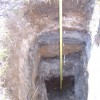 Soil is the most important building block of a healthy, attractive landscape, serving many important physical, chemical, and biological functions. Soil provides a physical substrate for plant support and holds nutrients and water for plant use. It also facilitates groundwater recharge (water moving from surface water to groundwater) and provides long-term storage for organic matter. Soil also provides a habitat for microorganisms that aid in the transformation and availability of nutrients. Soil is an integral part of any ecosystem, but urbanization often changes soils in ways that negatively affect plant development. Soils in urban areas may have reduced water infiltration, resulting in increased runoff and increased potential for nutrient losses. Homeowners in urban areas often overcompensate for poor planting conditions by applying inappropriate amounts of fertilizer and water. These practices eventually lead to nutrient losses through stormwater runoff or soil leaching, and these lost nutrients negatively impact groundwater and ecosystems in nearby springs, streams, and water bodies. This 6-page fact sheet was written by George Hochmuth, Laurie Trenholm, Esen Momol, Don Rainey, Claire Lewis, and Brian Niemann, and published by the UF Department of Soil and Water Science, November 2013.
Soil is the most important building block of a healthy, attractive landscape, serving many important physical, chemical, and biological functions. Soil provides a physical substrate for plant support and holds nutrients and water for plant use. It also facilitates groundwater recharge (water moving from surface water to groundwater) and provides long-term storage for organic matter. Soil also provides a habitat for microorganisms that aid in the transformation and availability of nutrients. Soil is an integral part of any ecosystem, but urbanization often changes soils in ways that negatively affect plant development. Soils in urban areas may have reduced water infiltration, resulting in increased runoff and increased potential for nutrient losses. Homeowners in urban areas often overcompensate for poor planting conditions by applying inappropriate amounts of fertilizer and water. These practices eventually lead to nutrient losses through stormwater runoff or soil leaching, and these lost nutrients negatively impact groundwater and ecosystems in nearby springs, streams, and water bodies. This 6-page fact sheet was written by George Hochmuth, Laurie Trenholm, Esen Momol, Don Rainey, Claire Lewis, and Brian Niemann, and published by the UF Department of Soil and Water Science, November 2013.
http://edis.ifas.ufl.edu/ss593
Maximizing the Benefits of Reclaimed Water for Irrigating the Landscape and Protecting the Environment
 Reclaimed water is water that has been treated in municipal wastewater facilities and is safe to use for designated purposes, including residential landscape irrigation. “Water reuse” is the term used to describe the beneficial application of reclaimed water. Approximately 663 million gallons of reclaimed water are used daily in Florida. Florida is a national leader in using reclaimed water, and in 2006 Florida’s reuse program received the first U.S. Environmental Protection Agency Water Efficiency Leader Award. Using reclaimed water in Florida meets a state objective for conserving freshwater supplies, and preserves the water quality of rivers, streams, lakes, and aquifers. This publication discusses the benefits of using reclaimed water to irrigate the landscape and explains how using reclaimed water helps to protect the environment. This 4-page fact sheet was written by George Hochmuth, Laurie Trenholm, Don Rainey, Esen Momol, Claire Lewis, and Brian Niemann, and published by the UF Department of Soil and Water Science, November 2013.
Reclaimed water is water that has been treated in municipal wastewater facilities and is safe to use for designated purposes, including residential landscape irrigation. “Water reuse” is the term used to describe the beneficial application of reclaimed water. Approximately 663 million gallons of reclaimed water are used daily in Florida. Florida is a national leader in using reclaimed water, and in 2006 Florida’s reuse program received the first U.S. Environmental Protection Agency Water Efficiency Leader Award. Using reclaimed water in Florida meets a state objective for conserving freshwater supplies, and preserves the water quality of rivers, streams, lakes, and aquifers. This publication discusses the benefits of using reclaimed water to irrigate the landscape and explains how using reclaimed water helps to protect the environment. This 4-page fact sheet was written by George Hochmuth, Laurie Trenholm, Don Rainey, Esen Momol, Claire Lewis, and Brian Niemann, and published by the UF Department of Soil and Water Science, November 2013.
http://edis.ifas.ufl.edu/ss587
Managing Landscape Irrigation to Avoid Soil and Nutrient Losses
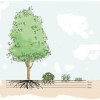 Proper irrigation management is critical to conserve and protect water resources and to properly manage nutrients in the home landscape. How lawns and landscapes are irrigated directly impacts the natural environment, so landscape maintenance professionals and homeowners must adopt environmentally-friendly approaches to irrigation management. After selecting the right plant for the right place, water is the next critical factor to establish and maintain a healthy lawn and landscape. Fertilization is another important component of lawn and landscape maintenance, and irrigation must be applied correctly, especially following fertilization, to minimize potential nutrient losses. This publication supplements other UF/IFAS Extension publications that also include information on the role of soil and the root zone in irrigation management. This publication is designed to help UF/IFAS Extension county agents prepare materials to directly address nutrient losses from lawns and landscapes caused by inadequate irrigation management practices.This 6-page fact sheet was written by George Hochmuth, Laurie Trenholm, Don Rainey, Esen Momol, Claire Lewis, and Brian Niemann, and published by the UF Department of Soil and Water Science, October 2013.
Proper irrigation management is critical to conserve and protect water resources and to properly manage nutrients in the home landscape. How lawns and landscapes are irrigated directly impacts the natural environment, so landscape maintenance professionals and homeowners must adopt environmentally-friendly approaches to irrigation management. After selecting the right plant for the right place, water is the next critical factor to establish and maintain a healthy lawn and landscape. Fertilization is another important component of lawn and landscape maintenance, and irrigation must be applied correctly, especially following fertilization, to minimize potential nutrient losses. This publication supplements other UF/IFAS Extension publications that also include information on the role of soil and the root zone in irrigation management. This publication is designed to help UF/IFAS Extension county agents prepare materials to directly address nutrient losses from lawns and landscapes caused by inadequate irrigation management practices.This 6-page fact sheet was written by George Hochmuth, Laurie Trenholm, Don Rainey, Esen Momol, Claire Lewis, and Brian Niemann, and published by the UF Department of Soil and Water Science, October 2013.
http://edis.ifas.ufl.edu/ss586
The Savvy Survey #4: Details in the Design
 As part of the Savvy Survey Series, this publication provides an overview of important facets of the survey process. Topics covered include modes for collecting responses, strategies for contacting clients and personalizing contacts, and tips for using incentives. The ability of a survey to gather accurate and useful information for assessing program needs or evaluating program outcomes is greatly influenced by the survey’s design. Careful attention to detail is essential. This 4-page fact sheet was written by Glenn D. Israel and Jessica L. Gouldthorpe, and published by the UF Department of Agricultural Education and Communication, October 2013.
As part of the Savvy Survey Series, this publication provides an overview of important facets of the survey process. Topics covered include modes for collecting responses, strategies for contacting clients and personalizing contacts, and tips for using incentives. The ability of a survey to gather accurate and useful information for assessing program needs or evaluating program outcomes is greatly influenced by the survey’s design. Careful attention to detail is essential. This 4-page fact sheet was written by Glenn D. Israel and Jessica L. Gouldthorpe, and published by the UF Department of Agricultural Education and Communication, October 2013.
http://edis.ifas.ufl.edu/pd064
Necropsies of Reptiles: Recommendations and Techniques for Examining Invasive Species
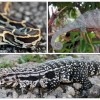 Captures and postmortem examinations, or necropsies, of invasive or nonnative animals may provide insight into the ecological impact of these invaders. Researchers should be able to perform necropsies when an opportunity arises to examine nonnative species for study. While the techniques described serve as a guide to necropsy of all reptiles, we focus on exotic species found in south Florida. South Florida provides prime habitat for invasive reptiles such as Argentine black and white tegu and Burmese python, and these species are used to describe our techniques. This 26-page fact sheet was written by Seth C. Farris, Michiko A. Squires, Frank Ridgley, Emma Lavergne, Mitchell Serota, and Frank J. Mazzotti, and published by the UF Department of Wildlife Ecology and Conservation, September 2013.
Captures and postmortem examinations, or necropsies, of invasive or nonnative animals may provide insight into the ecological impact of these invaders. Researchers should be able to perform necropsies when an opportunity arises to examine nonnative species for study. While the techniques described serve as a guide to necropsy of all reptiles, we focus on exotic species found in south Florida. South Florida provides prime habitat for invasive reptiles such as Argentine black and white tegu and Burmese python, and these species are used to describe our techniques. This 26-page fact sheet was written by Seth C. Farris, Michiko A. Squires, Frank Ridgley, Emma Lavergne, Mitchell Serota, and Frank J. Mazzotti, and published by the UF Department of Wildlife Ecology and Conservation, September 2013.
http://edis.ifas.ufl.edu/uw382
Happy Arbor Day!
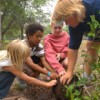 Florida has celebrated Arbor Day since 1886 and has one of the first Arbor Day celebrations in the nation, on the third Friday in January. Over 200 communities in Florida celebrate Arbor Day, either as a stand-alone event or in conjunction with some other occasion. Check with your local city officials or school department to see how your community is celebrating Arbor Day.
Florida has celebrated Arbor Day since 1886 and has one of the first Arbor Day celebrations in the nation, on the third Friday in January. Over 200 communities in Florida celebrate Arbor Day, either as a stand-alone event or in conjunction with some other occasion. Check with your local city officials or school department to see how your community is celebrating Arbor Day.
EDIS Arbor Day topic
UF/IFAS Solutions: Arbor Day
Invasive Species of Florida’s Coastal Waters: The Red Lionfish (Pterois volitans) and Devil Firefish (P. miles)
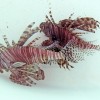 Two species of Indo-Pacific lionfish (Pterois volitans and P. miles) are the first reported non-native marine fish to become established in the Atlantic Ocean. Genetic studies indicate that lionfish in the Atlantic are likely all descendants of a few individuals, consistent with the widely held belief that lionfish were introduced into the Atlantic as a result of accidental or deliberate release of aquarium pets. Regardless of the method of introduction, the prolific spread of these invasive species in the Atlantic Ocean ecosystem is cause for concern. This 5-page fact sheet was written by Maia McGuire and Jeffrey HIll, and published by the UF Department of Sea Grant, January 2013.
Two species of Indo-Pacific lionfish (Pterois volitans and P. miles) are the first reported non-native marine fish to become established in the Atlantic Ocean. Genetic studies indicate that lionfish in the Atlantic are likely all descendants of a few individuals, consistent with the widely held belief that lionfish were introduced into the Atlantic as a result of accidental or deliberate release of aquarium pets. Regardless of the method of introduction, the prolific spread of these invasive species in the Atlantic Ocean ecosystem is cause for concern. This 5-page fact sheet was written by Maia McGuire and Jeffrey HIll, and published by the UF Department of Sea Grant, January 2013.
http://edis.ifas.ufl.edu/sg132
Psilido, Boreioglycaspis melaleucae Moore (Insecta: Hemiptera: Psyllidae)
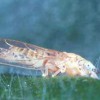 El árbol Melaleuca quinquenervia (Cav.) S. T. Blake (Myrtaceae), conocido como corteza de papel, es una especie invasora agresiva en varios ecosistemas del sur de Florida, incluyendo los Everglades. Melaleuca está considerado una plaga porque desplaza la vegetación nativa y degrada el hábitat de especies silvestres; además aumenta el peligro de incendios y puede causar problemas a la salud humana (Rayamajhi et al. 2002). El Departamento de Agricultura de los Estados Unidos (USDA) y el Servicio de Investigación Agrícola (ARS), bajo permiso federal y estatal, introdujeron el psílido Boreioglycaspis melaleucae en Florida en el Condado de Broward, en Febrero del 2002 como un agente potencial de control biológico de melaleuca. This 5-page fact sheet was written by Susan A. Wineriter, Susan E. Halbert, and James Cuda, and published by the UF Department of Entomology and Nematology, December 2013.
El árbol Melaleuca quinquenervia (Cav.) S. T. Blake (Myrtaceae), conocido como corteza de papel, es una especie invasora agresiva en varios ecosistemas del sur de Florida, incluyendo los Everglades. Melaleuca está considerado una plaga porque desplaza la vegetación nativa y degrada el hábitat de especies silvestres; además aumenta el peligro de incendios y puede causar problemas a la salud humana (Rayamajhi et al. 2002). El Departamento de Agricultura de los Estados Unidos (USDA) y el Servicio de Investigación Agrícola (ARS), bajo permiso federal y estatal, introdujeron el psílido Boreioglycaspis melaleucae en Florida en el Condado de Broward, en Febrero del 2002 como un agente potencial de control biológico de melaleuca. This 5-page fact sheet was written by Susan A. Wineriter, Susan E. Halbert, and James Cuda, and published by the UF Department of Entomology and Nematology, December 2013.
http://edis.ifas.ufl.edu/in1019
Sri Lankan weevil Myllocerus undecimpustulatus undatus Marshall
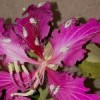 Myllocerus undecimpustulatus undatus Marshall, the Sri Lankan weevil, is a plant pest with a wide range of hosts. This weevil spread from Sri Lanka into India and then Pakistan where many subspecies of Myllocerus undecimpustulatus Faust are considered pests of more than 20 crops. In the United States, the Sri Lankan weevil was first identified on Citrus sp. in Pompano Beach a city in Broward County Florida. Three specimens were identified by Dr. Charles W. O’Brien, first as Myllocerus undecimpustulatus, a species native to southern India, and then again as Myllocerus undatus Marshall native to Sri Lanka, finally as Myllocerus undecimpustulatus undatus Marshall to show its status as a subspecies. This 4-page fact sheet was written by Anita Neal, and published by the UF Department of Entomology and Nematology, November 2013.
Myllocerus undecimpustulatus undatus Marshall, the Sri Lankan weevil, is a plant pest with a wide range of hosts. This weevil spread from Sri Lanka into India and then Pakistan where many subspecies of Myllocerus undecimpustulatus Faust are considered pests of more than 20 crops. In the United States, the Sri Lankan weevil was first identified on Citrus sp. in Pompano Beach a city in Broward County Florida. Three specimens were identified by Dr. Charles W. O’Brien, first as Myllocerus undecimpustulatus, a species native to southern India, and then again as Myllocerus undatus Marshall native to Sri Lanka, finally as Myllocerus undecimpustulatus undatus Marshall to show its status as a subspecies. This 4-page fact sheet was written by Anita Neal, and published by the UF Department of Entomology and Nematology, November 2013.
http://edis.ifas.ufl.edu/in1016
Working in Groups: The Importance of Communication in Developing Trust and Cooperation
 Working together in groups can be a great experience or one filled with stress and anxiety. The success of group work depends largely on the trust developed among group members and the respect they show each other. When an individual has had a positive experience in a group, he/she is more likely to take risks, ask questions, and share ideas that will benefit the total group. This 3-page fact sheet was written by Bryan D. Terry, and published by the UF Department of Family Youth and Community Sciences, August 2013.
Working together in groups can be a great experience or one filled with stress and anxiety. The success of group work depends largely on the trust developed among group members and the respect they show each other. When an individual has had a positive experience in a group, he/she is more likely to take risks, ask questions, and share ideas that will benefit the total group. This 3-page fact sheet was written by Bryan D. Terry, and published by the UF Department of Family Youth and Community Sciences, August 2013.
http://edis.ifas.ufl.edu/fy1378
A Consumer's Guide to Eggs
 People have been eating eggs for centuries. Records as far back as 1400 BC show that the Chinese and Egyptians raised birds for their eggs. The first domesticated birds to reach the Americas arrived in 1493 on Christopher Columbus' second voyage to the New World. Most food stores in the United States offer many varieties of chicken eggs to choose from — white, brown, organic, cage free, vegetarian, omega-3 fatty acid enriched, and more. The bottom line is that buying eggs is not as simple as it used to be because more choices exist today. This 4-page fact sheet will help you understand the choices you have as a consumer, so you can determine which variety of egg suits you and your family best. Written by Jeanine Beatty, Karla Shelnutt, and Gail Kauwell, and published by the UF Department of Family Youth and Community Sciences, April 2013.
People have been eating eggs for centuries. Records as far back as 1400 BC show that the Chinese and Egyptians raised birds for their eggs. The first domesticated birds to reach the Americas arrived in 1493 on Christopher Columbus' second voyage to the New World. Most food stores in the United States offer many varieties of chicken eggs to choose from — white, brown, organic, cage free, vegetarian, omega-3 fatty acid enriched, and more. The bottom line is that buying eggs is not as simple as it used to be because more choices exist today. This 4-page fact sheet will help you understand the choices you have as a consumer, so you can determine which variety of egg suits you and your family best. Written by Jeanine Beatty, Karla Shelnutt, and Gail Kauwell, and published by the UF Department of Family Youth and Community Sciences, April 2013.
http://edis.ifas.ufl.edu/fy1357
Rugose spiraling whitefly Aleurodicus rugioperculatus Martin (Hemiptera: Aleyrodidae)
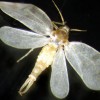 A new addition on the list of whitefly species found in Florida, Aleurodicus rugioperculatus Martin, was originally called the gumbo limbo spiraling whitefly, but is now named the rugose spiraling whitefly. Being a fairly new species to science – identified less than a decade ago, not much information is available about this pest. It is an introduced pest, endemic to Central America, and was reported for the first time in Florida from Miami-Dade County in 2009. Since then it has become an escalating problem for homeowners, landscapers, businesses, and governmental officials throughout the southern coastal counties of Florida. Feeding by this pest not only causes stress to its host plant, but the excessive production of wax and honeydew creates an enormous nuisance in infested areas. The presence of honeydew results in the growth of fungi called sooty mold, which then turns everything in the vicinity covered with honeydew black with mold. This 5-page fact sheet was written by Vivek Kumar, Cindy L. McKenzie, Catharine Mannion, Ian Stocks, Trevor Smith, and Lance S. Osborne, and published by the UF Department of Entomology and Nematology, October 2013.
A new addition on the list of whitefly species found in Florida, Aleurodicus rugioperculatus Martin, was originally called the gumbo limbo spiraling whitefly, but is now named the rugose spiraling whitefly. Being a fairly new species to science – identified less than a decade ago, not much information is available about this pest. It is an introduced pest, endemic to Central America, and was reported for the first time in Florida from Miami-Dade County in 2009. Since then it has become an escalating problem for homeowners, landscapers, businesses, and governmental officials throughout the southern coastal counties of Florida. Feeding by this pest not only causes stress to its host plant, but the excessive production of wax and honeydew creates an enormous nuisance in infested areas. The presence of honeydew results in the growth of fungi called sooty mold, which then turns everything in the vicinity covered with honeydew black with mold. This 5-page fact sheet was written by Vivek Kumar, Cindy L. McKenzie, Catharine Mannion, Ian Stocks, Trevor Smith, and Lance S. Osborne, and published by the UF Department of Entomology and Nematology, October 2013.
http://edis.ifas.ufl.edu/in1015
Stink Bugs in Florida Rice
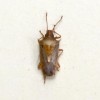 Although many different insects can be found in rice fields in Florida, stink bugs are currently considered the most important pest. Jones and Cherry reported that the rice stink bug was the dominant species, comprising more than 95% of the total stink bug population. Cherry et al. (1998) reported that the stink bug Oebalus ypsilongriseus was widespread in Florida rice fields. This was the first report of this species being found in commercial rice fields in the United States. Cherry and Nuessly (2010) reported that the stink bug Oebalus insularis is now widespread in Florida rice fields. This was the first report of this species being found in commercial rice fields in the United States. The stink bug complex attacking Florida rice is the most diversified and unique stink bug complex in US rice production. This 4-page fact sheet was written by Ron Cherry, and published by the UF Department of Entomology and Nematology, October 2013.
Although many different insects can be found in rice fields in Florida, stink bugs are currently considered the most important pest. Jones and Cherry reported that the rice stink bug was the dominant species, comprising more than 95% of the total stink bug population. Cherry et al. (1998) reported that the stink bug Oebalus ypsilongriseus was widespread in Florida rice fields. This was the first report of this species being found in commercial rice fields in the United States. Cherry and Nuessly (2010) reported that the stink bug Oebalus insularis is now widespread in Florida rice fields. This was the first report of this species being found in commercial rice fields in the United States. The stink bug complex attacking Florida rice is the most diversified and unique stink bug complex in US rice production. This 4-page fact sheet was written by Ron Cherry, and published by the UF Department of Entomology and Nematology, October 2013.
http://edis.ifas.ufl.edu/in1009
The UF/IFAS Assessment of Nonnative Plants in Florida’s Natural Areas: History, Purpose, and Use
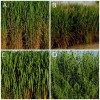 Nonnative invasive plant species pose a significant threat to Florida’s natural areas. The UF/IFAS Assessment of Nonnative Plants in Florida’s Natural Areas (hereafter, UF/IFAS Assessment) uses literature-based risk assessment tools to predict the invasion risk of both nonnative species that occur in the state as well as species proposed for introduction. The UF/IFAS Assessment team has evaluated more than 770 species, including 97 species proposed for introduction or new uses. The team is actively identifying and evaluating potentially problematic nonnative species (and sub-specific or hybrid taxa). Recommendations and supporting information from the UF/IFAS Assessment can be found at http://plants.ifas.ufl.edu/assessment. This 6-page fact sheet was written by Deah Lieurance, S. Luke Flory, Aimee L. Cooper, Doria R. Gordon, Alison M. Fox, Joan Dusky, and Linda Tyson, and published by the UF Department of Agronomy, November 2013.
Nonnative invasive plant species pose a significant threat to Florida’s natural areas. The UF/IFAS Assessment of Nonnative Plants in Florida’s Natural Areas (hereafter, UF/IFAS Assessment) uses literature-based risk assessment tools to predict the invasion risk of both nonnative species that occur in the state as well as species proposed for introduction. The UF/IFAS Assessment team has evaluated more than 770 species, including 97 species proposed for introduction or new uses. The team is actively identifying and evaluating potentially problematic nonnative species (and sub-specific or hybrid taxa). Recommendations and supporting information from the UF/IFAS Assessment can be found at http://plants.ifas.ufl.edu/assessment. This 6-page fact sheet was written by Deah Lieurance, S. Luke Flory, Aimee L. Cooper, Doria R. Gordon, Alison M. Fox, Joan Dusky, and Linda Tyson, and published by the UF Department of Agronomy, November 2013.
http://edis.ifas.ufl.edu/ag376
Outbreaks of Foodborne Illness Associated with Common Berries, 1983 through May 2013
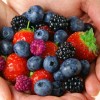 This 9-page fact sheet serves as a reference for anyone concerned about the safety of fresh and frozen berry products. Providing information for those who grow, harvest, process, transport, and serve berries to consumers is important for improving science-based food safety programs for the entire supply chain. Table 1 lists the reported outbreaks of foodborne illness from 1983 through May 2013 in which specific berries and mixed berries have been identified as the food vehicle. Table 2 lists the reported outbreaks in which berries were likely the food vehicle.
This 9-page fact sheet serves as a reference for anyone concerned about the safety of fresh and frozen berry products. Providing information for those who grow, harvest, process, transport, and serve berries to consumers is important for improving science-based food safety programs for the entire supply chain. Table 1 lists the reported outbreaks of foodborne illness from 1983 through May 2013 in which specific berries and mixed berries have been identified as the food vehicle. Table 2 lists the reported outbreaks in which berries were likely the food vehicle.
Written by M. Palumbo, L. J. Harris, and M. D. Danyluk, and published by the UF Department of Food Science and Human Nutrition, November 2013.
http://edis.ifas.ufl.edu/fs232
Application of Surfactants in Commercial Crop Production for Water and Nutrient Management in Sandy Soil
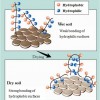 Water-repellent soils are unable to effectively adsorb or retain water. On these soils, water may simply pool on the surface or may move down preferred pathways, leaving large amounts of soil dry even when a large volume of water is applied. Thus, managing water and nutrients in sandy soils is often challenging. This 6-page fact sheet provides an overview of surfactants and how they may be used to better manage water and nutrients in sandy soils for vegetable and fruit production. Written by Guodong Liu, Monica Ozores-Hampton, Gene McAvoy, Ben Hogue, and Crystal A. Snodgrass, and published by the UF Department of Horticultural Sciences, October 2013.
Water-repellent soils are unable to effectively adsorb or retain water. On these soils, water may simply pool on the surface or may move down preferred pathways, leaving large amounts of soil dry even when a large volume of water is applied. Thus, managing water and nutrients in sandy soils is often challenging. This 6-page fact sheet provides an overview of surfactants and how they may be used to better manage water and nutrients in sandy soils for vegetable and fruit production. Written by Guodong Liu, Monica Ozores-Hampton, Gene McAvoy, Ben Hogue, and Crystal A. Snodgrass, and published by the UF Department of Horticultural Sciences, October 2013.
http://edis.ifas.ufl.edu/hs1230
Public Land Management Agencies’ and Nonindustrial Private Forest Landowners’ Perceptions towards Ecosystem Services
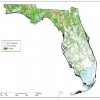 The state of Florida has more than 16 million acres of forestland. From clean air to pulp for paper to aesthetic landscapes, humans benefit from private and public forests in many different ways. However, small private landowners and public land management agencies manage the majority of this land, and it is up to these people to decide how society will benefit from those forests. This paper uses the concept of ecosystem services to explore the reasons why public land management agencies and private landowners manage their forests. This 5-page fact sheet was written by Taylor Stein, Namyun Kil, Alexis Frank, Alison E. Adams, Damian C. Adams, and Francisco J. Escobedo, and published by the UF Department of School of Forest Resources and Conservation, July 2013.
The state of Florida has more than 16 million acres of forestland. From clean air to pulp for paper to aesthetic landscapes, humans benefit from private and public forests in many different ways. However, small private landowners and public land management agencies manage the majority of this land, and it is up to these people to decide how society will benefit from those forests. This paper uses the concept of ecosystem services to explore the reasons why public land management agencies and private landowners manage their forests. This 5-page fact sheet was written by Taylor Stein, Namyun Kil, Alexis Frank, Alison E. Adams, Damian C. Adams, and Francisco J. Escobedo, and published by the UF Department of School of Forest Resources and Conservation, July 2013.
http://edis.ifas.ufl.edu/fr380
Economic Consequences of Harmful Algal Blooms: Literature Summary
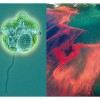 This 10-page fact sheet summarizes the existing literature that attempts to measure some of the economic consequences associated with harmful algal blooms and describes the methodologies, types and sources of data used, types of HABS examined, research gaps in previous studies. Was written by Sherry L. Larkin and Charles M. Adams, and published by the UF Department of Food and Resource Economics, August 2013.
This 10-page fact sheet summarizes the existing literature that attempts to measure some of the economic consequences associated with harmful algal blooms and describes the methodologies, types and sources of data used, types of HABS examined, research gaps in previous studies. Was written by Sherry L. Larkin and Charles M. Adams, and published by the UF Department of Food and Resource Economics, August 2013.
http://edis.ifas.ufl.edu/fe936
Drying and Preserving Plant Materials for Decorative Uses
 Dried and preserved plant materials are popular for home decor. Dried arrangements can preserve the graceful lines, textures, and colors of flowers and foliage with a subtle and gently aged appearance. This 14-page fact sheet was written by Sydney Park Brown, Patricia White, Benny Tjia, Marion R. Sheehan, and published by the UF Department of Environmental Horticulture, November 2013.
Dried and preserved plant materials are popular for home decor. Dried arrangements can preserve the graceful lines, textures, and colors of flowers and foliage with a subtle and gently aged appearance. This 14-page fact sheet was written by Sydney Park Brown, Patricia White, Benny Tjia, Marion R. Sheehan, and published by the UF Department of Environmental Horticulture, November 2013.
http://edis.ifas.ufl.edu/ep004